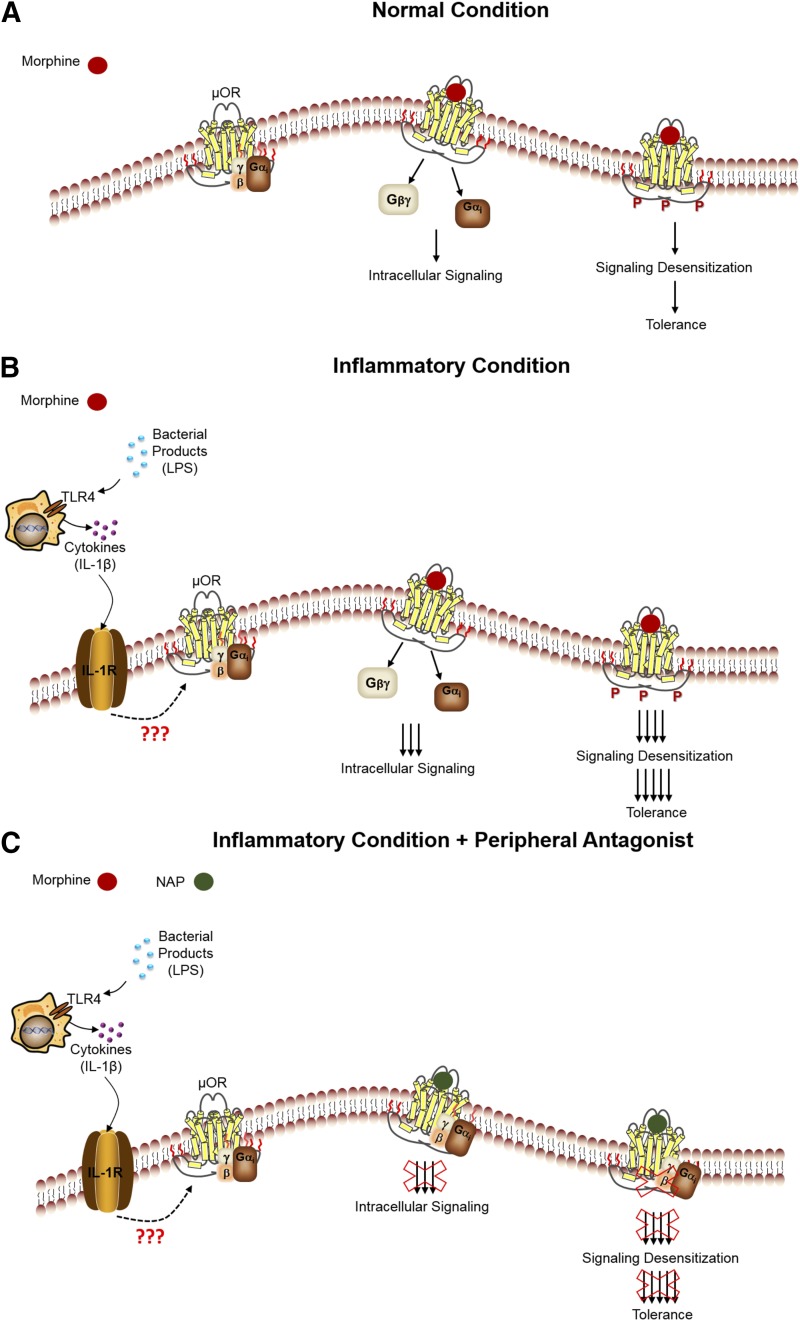Fig. 9.
Proposed schematic of the reversal of antinociceptive tolerance by NAP. (A) Under a normal condition, when morphine is used, it binds to MOR, activates the receptor, and induces downstream intracellular signaling. Continual activation of the receptor by morphine results in signaling desensitization, leading to morphine-induced tolerance. (B) During an inflammatory condition, cytokines released from immune cells may interact with the MOR directly or indirectly, resulting in a potent morphine response upon binding, leading to an enhanced rate of tolerance development. (C) In the presence of a peripheral antagonist, NAP, the enhanced morphine tolerance that developed is blocked. LPS, (lipopolysaccharide).

